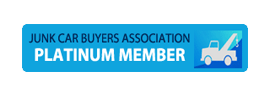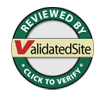Title & quick summary

What to expect when you sell
If you’re wondering “how much can I get for a junk car?” the short answer is: it depends — offers vary widely based on parts, title status, and condition; for a step-by-step breakdown and tips to maximize your payout, see the ultimate guide to junk your car for cash: maximize your vehicle’s value.
Current trends to know up front: mobile pickup and contactless handoffs are now common, instant-offer online platforms provide quick quotes (often with mobile tow included), ACH or instant bank transfer payouts are replacing cash or paper checks for safety, and EV battery recycling requirements are changing how buyers value hybrid and electric vehicles. These changes speed transactions but make documentation and disclosure more important than ever.
Decide whether to junk, total, part out, or repair — and if you’re considering scrapping it, see how to sell your junk car for cash (even if it’s barely running) for step-by-step guidance.
Quick decision flow
Use a simple decision rule: repair if repair cost is significantly less than the car’s market value (a common practical threshold is when repair cost is less than about half the vehicle’s pre-repair market value); accept an insurer total loss when the insurer declares a total; part out if you can sell high-value components profitably and have the time and means to do so; junk if towing/repair costs and effort exceed expected returns.
Remember: parting out takes time, shipping know-how, and safe storage; if you’d rather sell the whole vehicle quickly, consider services like cash for cars philadelphia pa to get an immediate offer.
Special note for EVs
Electric vehicles change the calculus. A strong battery pack can add significant salvage value; a failed battery can substantially reduce offers because of the high cost of replacement and the extra handling needed for high-voltage packs. Factor in potential battery recycling or remanufacture credits when evaluating offers, and disclose battery condition up front — buyers expect it.
How to assess your car quickly (what to inspect & record)
Essential data to collect
Collect the VIN, year/make/model/trim, odometer reading, a short description of visible damage, whether the engine runs, and title status (clean, salvage, lien). These data points let buyers give remote quotes and reduce time wasted on low-ball or conditional offers.
Photograph checklist
Good photos increase remote bids. Take clear shots of the four corners of the vehicle, engine bay, interior, dashboard showing odometer, VIN plate, and close-ups of any damage or rust. For EVs and hybrids include photos of battery labels and any dash warning lights related to battery systems.
Documentation checklist & title-transfer tips
Core documents to prepare
Have the vehicle title signed and ready (or be prepared to work with the lender for payoff), a government photo ID, and a bill of sale. Use a short, clear bill of sale that states vehicle details, sale price, date, and buyer and seller names and signatures. Many states require an odometer disclosure for vehicles under certain ages; some require notarization or specific language — check your state DMV before completing the sale.
Handling liens and lenders
If there’s a lien, request a written payoff quote from your lender showing the exact amount and payoff address. Many buyers will coordinate payoff with the lender, but they will need lender contact information and the payoff statement. Do not sign over the title until you understand how the buyer will clear the lien and when funds will post.
Where to get offers: channels to consider

Online instant-offer platforms and marketplaces
Services that provide online quotes and often include mobile pickup can be the fastest option. They typically ask for vehicle details and photos, return a firm quote (sometimes conditional on inspection), and will schedule towing. These platforms are convenient, especially if you want a quick, low-effort sale.
Salvage yards & local scrappers
Local salvage yards can sometimes pay more for vehicles with valuable metal or parts because they have established parts resale channels. Ask whether they pay for whole cars, parts, or only scrap metal, and whether they offer immediate pickup and documentation suitable for your state DMV.
Auctions & DIY selling
If you’re willing to invest time, listing a car or parts on Copart/IAA (salvage auctions), eBay, or local marketplaces can yield higher returns. The trade-off is longer time to close, potential listing fees, shipping or removal logistics, and more buyer management.
How to request, compare, and verify offers
Key questions to ask every buyer
Always ask: what is the firm payout amount and is it net after fees; who pays towing; where and when will title transfer occur; which payment methods are accepted; what is pickup timeline; and is the quote conditional on inspection? Get answers in writing (text or email) before releasing the vehicle.
Comparing offers fairly
Compare net payout after towing and fees. If a buyer pays a lower headline amount but covers towing and lien payoff, that may be better than a higher-looking offer that leaves you to pay removal costs. Confirm whether the offer is conditional on an in-person inspection that could change the price.
Verifying buyer legitimacy
Check business reviews (Google, local review sites, Better Business Bureau), request a business name and contact info, and insist on a written offer. If accepting company checks or ACH, get the buyer’s business name and verify banking details before releasing title. If anything feels rushed or opaque, step back and get another offer.
Negotiation tactics & sample scripts
Smart negotiating moves
Get multiple written offers and use competing offers as leverage. Be firm about who pays tow and whether the buyer will accept liability once title transfers. Ask buyers to waive small administrative fees to close quickly. Set a short deadline for offers to increase leverage: buyers often respond faster when the seller signals they are ready to sell today.
Sample scripts
Cold-call opener: “Hi, I have a 2012 [make/model], VIN [VIN], it runs/doesn’t run, clean/salvage title — what’s your cash offer and does that include towing?”
Counteroffer: “I have two offers: $X (no tow) and $Y (includes free pickup). Can you match or beat $Y? I’m ready to sell today if you can.” Keep it brief and time-limited.
Preparing the car for pickup to maximize payout
What to do before the tow truck arrives
Remove personal items and valuables, take final photos for your records, gather title/keys/remotes, and disable alarms. In many states you must remove license plates; check local rules. If it’s safe, give the vehicle a quick exterior wash and tidy the interior — small improvements can increase buyer confidence and sometimes bump offers.
Towing and access notes
Confirm the pickup window, vehicle location details (gated communities, parking permits), and whether the buyer will provide the tow truck. If you must wait for a tow arranged by the buyer, get a specific window and the driver’s contact number so you can verify identity on arrival.
Common payment methods & fraud red flags
Secure payment methods
Preferred payment methods are instant bank transfer (ACH or same-day bank transfer) verified with your bank, certified cashier’s checks verified directly with the issuing bank, or on-site cash for smaller transactions. When accepting company checks or ACH, verify the payer’s identity and business details and wait until funds fully clear before releasing title and keys.
Fraud red flags to watch for
Beware of buyers who ask you to wire money back, insist you release title before payment clears, use unusual escrow sites, or pressure you to act immediately without documentation. If a buyer overpays and requests a refund of the difference, pause and verify — overpayment scams are common.
Environmental & disposal considerations (including EV batteries)
Fluid, pollutant, and hazardous-part handling
Scrappers often handle waste fluids and hazardous parts, but rules vary by jurisdiction. Ask potential buyers whether they will drain fluids and how they document hazardous-material disposal. Improper disposal of motor oil, refrigerants, and airbag modules can lead to fines.
EV and hybrid battery handling
Only sell EVs or hybrids to buyers who are equipped to safely remove and recycle high-voltage battery packs. Ask for proof of recycler certification or documented recycling plans; responsible buyers will provide evidence of compliant disposal or transfer to a certified recycler. Disclosing battery history (state of health, charging issues, crash damage) upfront reduces confusion and protects you legally.
Donate vs sell: which is right for you?
When to donate
Donating is best when convenience matters, you want a charitable receipt, or the vehicle won’t fetch good cash due to damage or title restrictions. Nonprofit pickup programs offer free towing and a receipt for tax purposes — get the organization’s tax ID and a written acknowledgement.
When to sell
Selling typically yields higher cash than donation, especially when parts or metals have value. Selling also gives you control over timing and payment method. If maximizing cash is the priority, obtain multiple offers from different channels before choosing donation for convenience.
State DMV & legal reminders after the sale
File required notices and cancel insurance
File a release of liability or notice of transfer with your state DMV immediately and keep copies of all signed paperwork and photos. Cancel insurance and (if applicable) surrender or retain plates according to local rules to prevent future liability. Many states provide online forms to speed notification.
If the buyer fails to pay or abandons the vehicle
Document all communications, preserve the title until payment clears, and contact law enforcement if you suspect theft or fraud. Do not sign over title until funds are verified. If a buyer abandons a vehicle after taking possession, your documentation will be essential for any dispute.
Downloadable checklist & template messages (what to include)
Checklist items to gather
Prepare: VIN, title status, photos (8+ standard shots), lien payoff info, written offers, pickup access notes, keys/remotes, buyer contact info, and time-stamped DMV release confirmation. Keep digital copies of all documents and photos for at least a year after the sale.
Copy/paste-ready message templates
Inquiry to buyer: “Hi — I have a [year] [make/model], VIN [VIN], [runs/doesn’t run], title: [clean/salvage/lien]. Please send your firm cash offer, confirm whether towing is included, and provide pickup availability.”
Counteroffer: “Thanks. I have an offer for $Y with free pickup today. Can you match or beat $Y? I’m ready to sell within 24 hours if you can.”
Pickup instructions: “Pickup address: [address]. Vehicle accessible from [time window]. Gate code/parking note: [details]. Please text driver name and ETA 30 minutes before arrival.”
Visuals & photo guide (what sellers should photograph)
Essential image set
Take four-corner wide shots, damage close-ups, VIN plate, odometer, title photo (redact personal info), engine bay, interior, and EV battery label if applicable. Use natural light, steady framing, and neutral backgrounds so buyers can assess condition remotely.
Examples to include with your listing
Show clean photos vs poor photos (clear vs blurry; full-vehicle vs single close-up) to demonstrate how good photos increase offers. Include a simple diagram of the transaction flow: offer → written confirmation → payment verification → title signing → tow/pickup → DMV filing.
Final checklist & next steps
Five-step closing plan
1) Gather documents & photos. 2) Get at least three written offers. 3) Verify buyer identity and payment method. 4) Sign and transfer title only after funds clear or buyer’s payment is verified. 5) File your DMV release and cancel insurance.
Last practical tip
If you’re unsure, wait 24–48 hours to compare offers — instant online offers are convenient but not always the highest. Use the time to verify buyers and get the best net payout. Keep copies of everything and prioritize safety during pickup.
Ready-to-use checklist (text you can copy)
VIN: _______ | Title status: _______ | Odometer: _______ | Photos taken: Y/N | Lien: Y/N (payoff $: _______) | Offers (1): $____ (towing Y/N) | Offers (2): $____ | Offers (3): $____ | Preferred buyer: _______ | Payment method: _______ | DMV release filed: Date/confirmation # _______
Template closing confirmation (copy/paste)
“Payment of $[amount] received via [method] and cleared. I, [seller name], transfer title for VIN [VIN] to [buyer name/company] on [date]. Keys handed over at [time]. Buyer will remove vehicle by [pickup window]. Seller filed notice of transfer with [state] DMV on [date].”
Note: Check your state DMV for specific transfer, plate, and salvage-certificate rules before finalizing any transaction. If you have questions about liens, taxes, or charitable deduction rules, consider a brief consultation with your lender or tax advisor.
Ready to turn your unwanted vehicle into quick cash? Kelly Car Buyer, Inc makes it easy to sell almost any type of vehicle—including cars, junk cars, trucks, semi-tractors, and trailers—regardless of condition. Don’t wait to get the best offer—click now to discover how simple and hassle-free selling your vehicle can be, and enjoy fast, top-dollar payouts today!








